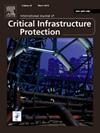Assessing earthquake risks to lifeline infrastructure systems in the United States
IF 5.3
3区 工程技术
Q1 COMPUTER SCIENCE, INFORMATION SYSTEMS
International Journal of Critical Infrastructure Protection
Pub Date : 2025-03-24
DOI:10.1016/j.ijcip.2025.100758
引用次数: 0
Abstract
The security and economic stability of the United States rely heavily on robust lifeline infrastructure systems and yet the risks to such systems are seldom quantified at the national scale. For example, while earthquake risks to buildings in the United States have been investigated at the national scale regularly, such risks to gas pipelines have rarely been investigated nationally. In this paper, we use examples from two critical infrastructure sectors to demonstrate (1) the nature of earthquake risks to lifeline infrastructure systems, (2) complexities involved in regional seismic risk assessments, and (3) how such risks change with time. We found that bridge risks can be underestimated by at least 64 % when viewed from repair costs instead of traffic demands and that regional risks can be underestimated by 19 % when spatial correlations of ground motion are ignored. Further, exceedance of traffic demand can be 50 times more likely to occur when viewed at the regional scale than when viewed at an individual bridge. Similarly, exceedance of repairs can be 180 times more likely to occur when viewed at the pipeline network level than at a segment-specific level. Finally, sensitivity analyses with the 2018 and 2023 USGS National Seismic Hazard Models indicate an increase in bridge risk of at least 24 % and an increase in exposed gas pipeline mileage of 43 %. The evolution of risks, complexities involved in assessments, and limited resources jointly underscore the need for more routine updates to nationwide seismic risk assessments of lifeline systems in the United States.
评估美国生命线基础设施系统的地震风险
美国的安全和经济稳定在很大程度上依赖于强大的生命线基础设施系统,但这些系统所面临的风险却很少在全国范围内进行量化。例如,美国定期在全国范围内调查建筑物的地震风险,但却很少在全国范围内调查天然气管道的此类风险。在本文中,我们用两个关键基础设施部门的例子来说明:(1) 生命线基础设施系统地震风险的性质;(2) 区域地震风险评估的复杂性;(3) 这种风险如何随时间变化。我们发现,如果从维修成本而非交通需求的角度来看,桥梁风险可能被低估至少 64%;如果忽略地动的空间相关性,区域风险可能被低估 19%。此外,从区域范围来看,交通需求超标的可能性是单座桥梁的 50 倍。同样,从管网层面来看,维修费用超标的可能性是分段层面的 180 倍。最后,使用 2018 年和 2023 年 USGS 国家地震灾害模型进行的敏感性分析表明,桥梁风险至少增加 24%,暴露的天然气管道里程增加 43%。风险的演变、评估的复杂性和有限的资源共同强调了对美国全国生命线系统地震风险评估进行更多例行更新的必要性。
本文章由计算机程序翻译,如有差异,请以英文原文为准。
求助全文
约1分钟内获得全文
求助全文
来源期刊

International Journal of Critical Infrastructure Protection
COMPUTER SCIENCE, INFORMATION SYSTEMS-ENGINEERING, MULTIDISCIPLINARY
CiteScore
8.90
自引率
5.60%
发文量
46
审稿时长
>12 weeks
期刊介绍:
The International Journal of Critical Infrastructure Protection (IJCIP) was launched in 2008, with the primary aim of publishing scholarly papers of the highest quality in all areas of critical infrastructure protection. Of particular interest are articles that weave science, technology, law and policy to craft sophisticated yet practical solutions for securing assets in the various critical infrastructure sectors. These critical infrastructure sectors include: information technology, telecommunications, energy, banking and finance, transportation systems, chemicals, critical manufacturing, agriculture and food, defense industrial base, public health and health care, national monuments and icons, drinking water and water treatment systems, commercial facilities, dams, emergency services, nuclear reactors, materials and waste, postal and shipping, and government facilities. Protecting and ensuring the continuity of operation of critical infrastructure assets are vital to national security, public health and safety, economic vitality, and societal wellbeing.
The scope of the journal includes, but is not limited to:
1. Analysis of security challenges that are unique or common to the various infrastructure sectors.
2. Identification of core security principles and techniques that can be applied to critical infrastructure protection.
3. Elucidation of the dependencies and interdependencies existing between infrastructure sectors and techniques for mitigating the devastating effects of cascading failures.
4. Creation of sophisticated, yet practical, solutions, for critical infrastructure protection that involve mathematical, scientific and engineering techniques, economic and social science methods, and/or legal and public policy constructs.
 求助内容:
求助内容: 应助结果提醒方式:
应助结果提醒方式:


